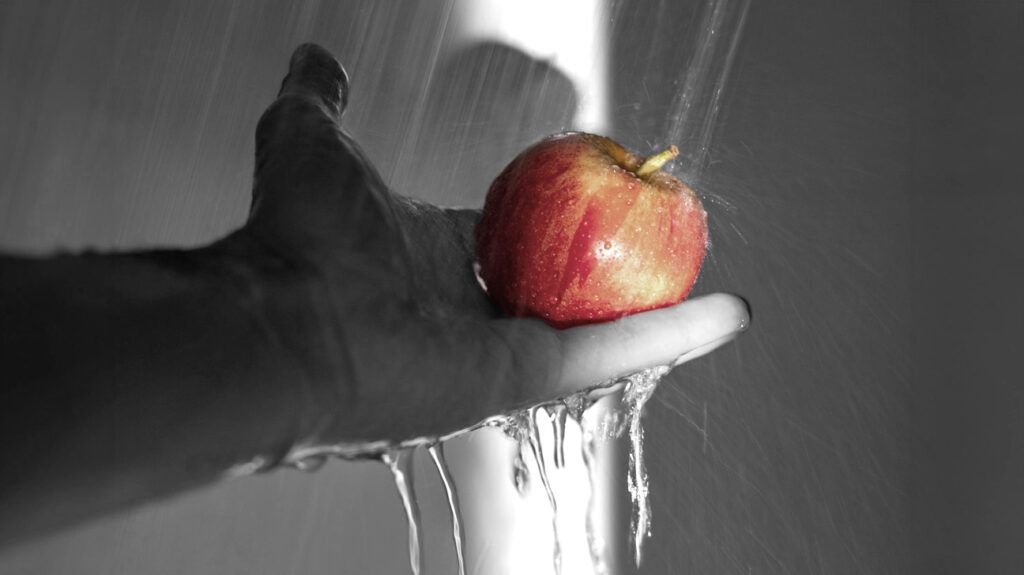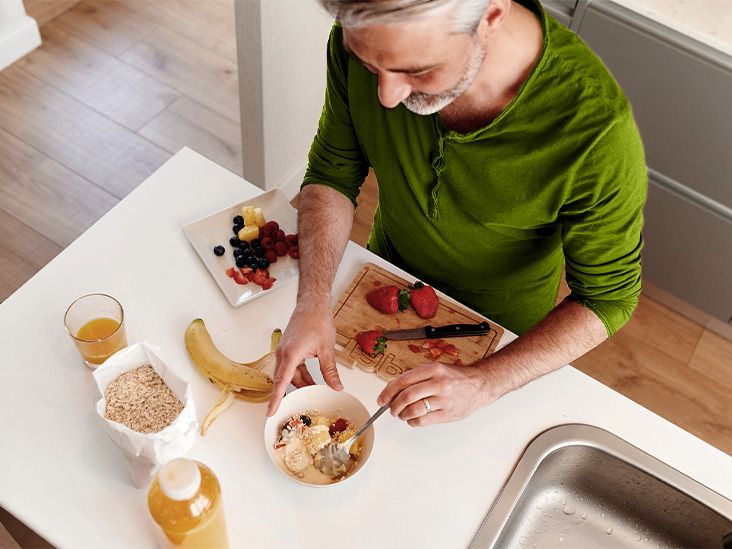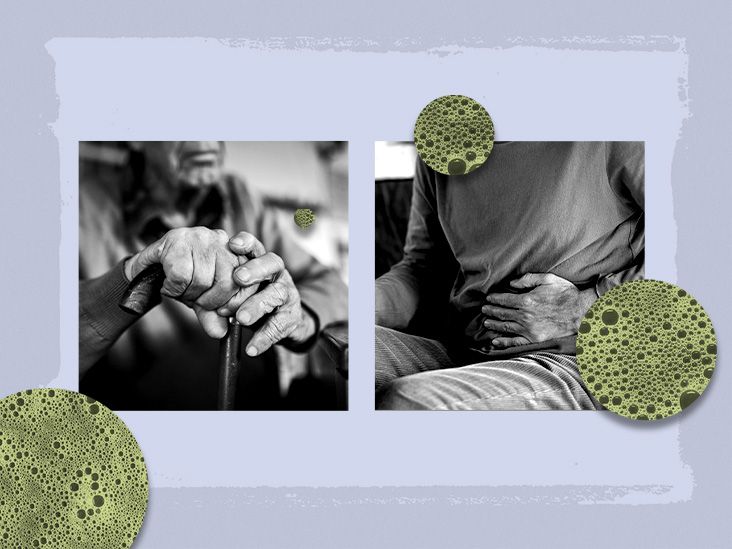Safe practices when handling and cooking food help ensure harmful bacteria do not cause illness. People should also take care when cleaning and chilling food after use.
Generally, before preparing food, a person should always wash their hands and keep kitchen surfaces clean to avoid cross-contamination. Other measures include separating raw and cooked foods, cooking at the correct temperature, and storing food appropriately.
This article explains four food safety tips and when to contact a doctor about food-related illnesses.

The main safe cleaning tips include washing hands and surfaces often. The
Clean hands before and after handling food
People should wash their hands for at least 20 seconds with soap and warm or cold water before, during, and after preparing food and before eating.
Specifically, a person should try to scrub the backs of their hands, between their fingers, and under their nails for at least 20 seconds.
People should always wash their hands after handling food to help prevent foodborne illness. It is particularly important to do this when handling:
- uncooked meat
- chicken and other poultry
- seafood
- flour
- eggs
Read more about thorough handwashing.
Clean hands before and after certain household tasks
FoodSafety.gov also encourages washing hands after:
- using the toilet
- changing diapers or cleaning up a child who has used the toilet
- touching an animal or animal waste
- handling pet food or treats
- touching garbage
- caring for someone who is sick
- treating a cut or wound
- blowing nose, coughing, or sneezing
The above are some examples, but it is not a comprehensive list.
Clean surfaces and utensils
After preparing each food item, people should wash utensils, cutting boards, and countertops with hot, soapy water. This is important for all foods, and especially if the preparation items have touched raw meat, poultry, seafood, or eggs.
People can help prevent foodborne illness by ensuring anything that comes into contact with food remains clean.
Clean foods
FoodSafety.gov provides the following recommendations when cleaning certain foods:
- rinsing fresh fruits and vegetables under running water, and before peeling or removing skins
- drying rinsed foods with a paper towel or clean cloth
- avoiding washing meat, eggs, or seafood
- avoiding washing prewashed foods
Learn more about washing fruits and vegetables.
To avoid cross-contamination, the
- shopping
- packing and unpacking groceries
- putting items into the refrigerator or freezer
- storing, including using sealed containers or bags
- using cutting boards, utensils, or plates
People do not need to wash raw meat before use, as doing so can spread more germs to other foods, the sink, and nearby surfaces.
If a person chooses to wash chicken, the CDC advises doing it as safely as possible. This involves:
- running the water gently over the chicken to reduce splashing
- immediately clean the sink and area with hot, soapy water afterward
- washing hands for 20 seconds afterward
Read more about washing meat.
A food thermometer helps ensure food reaches a safe internal temperature. Anecdotal reports suggest that some people can assess meat by touching it. Still, even if they consider the meat to be “done,” it does not ensure safety.
Oven cooking and heating
The Food and Drug Administration (FDA) suggests the following are safe temperatures for cooking different food types:
145 degrees Fahrenheit (°F)Trusted Source , equivalent to 62.8 degrees Celsius (°C), for beef, veal, lamb, and pork- 145°F (63°C) for fish with fins
- 160°F (71°C) for ground beef and pork
- 165°F (74°C) for ground chicken and turkey
- 165°F (74°C) for leftovers and casseroles
Microwave cooking and heating
People should check their microwave’s wattage, as this will determine the
Generally, high wattage (800 watts [W] or greater) indicates food only requires the minimum cooking time. Low wattage (usually 300–500 W) indicates food requires the maximum cooking time.
People must ensure they microwave food thoroughly and always follow the directions on the label. Allow the food to stand after cooking if the label instructs calls for that.
When reheating, microwaved food should ideally reach 165°F (74°C). According to 2013 research, microwaves may not cook evenly, so a person might want to stir, rotate, and turn food upside down (if possible) to help prevent any cold spots in the food.
According to the CDC, bacteria can multiply rapidly if left at room temperature, or in the “danger zone,” which lies between
A refrigerator should be at 40°F (4°C) or lower, and a freezer at 0°F (-18°C) or lower. People may be able to tell if appliances are not working correctly if the food in them does not feel cold or frozen.
Refrigerating
The
- meat
- cut fruit
- seafood
- dairy
- cooked leftovers
If the food has been in temperatures above 90°F (32°C), such as in hot transport or at a picnic, refrigerate it within 1 hour.
Freezing and thawing
FoodSafety.gov suggests that freezing does not destroy harmful germs but can keep food safe until people cook it.
Learn more about safely freezing meat.
They also recommend that people do not thaw food on the counter as bacteria may multiply quickly in the parts of the food that reach room temperature.
The
- in the fridge
- under cold water
- in the microwave
Anecdotal reports suggest if a person’s home remains at a steady temperature, there should not be any issues thawing at room temperature. However, they should thaw in a sealable container and clean any spilled juices or liquids thoroughly to help prevent the spread of bacteria.
Find out about safely thawing chicken.
The
- bloody diarrhea
- diarrhea that lasts more than 3 days
- high fever (over 102°F, or 39°C)
- vomiting even after liquids
- signs of dehydration, such as:
Doctors can assess whether bacteria from food has caused people to develop these symptoms and prescribe suitable treatments.
Learn more about how long food poisoning lasts.
Anyone can contract a foodborne illness, but the
- pregnant people
- young children
- older people
- people with weakened immune systems
If a person believes eating a certain meat caused an illness, they should call the United States Department of Agriculture at 1-888-674-6854 or contact the FDA at 1-866-300-4374 for all other food-related queries.
Taking steps and precautions when cleaning, separating, cooking, and chilling foods helps prevent foodborne illnesses.
People should wash their hands for at least 20 seconds with soapy, warm before and after handling food. They should also take the correct measures to wash utensils and certain foods. Always avoid cross-contamination by separating ready-to-eat foods from fresh produce.
Experts consider food safely cooked when the internal temperature gets high enough to kill germs that could make a person sick. People should follow FDA guidelines for suitable temperatures for each type of food.
People should refrigerate, freeze, and thaw foods at the correct temperature. Bacteria can multiply rapidly if left at room temperature or in the danger zones of 40–140°F (4–60°C). If someone experiences severe symptoms after preparing or eating food at home, they should consult a doctor.


